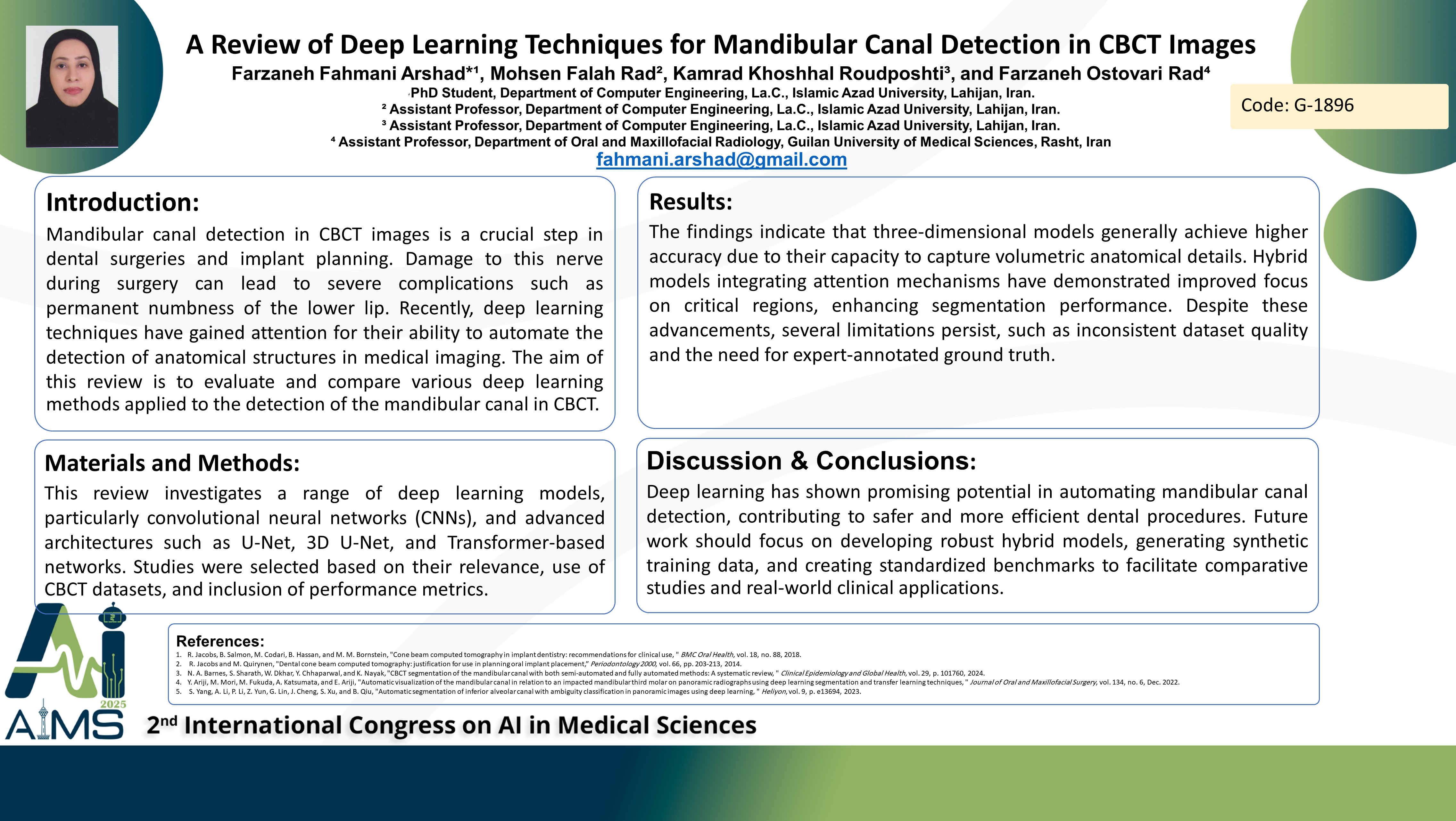A Review of Deep Learning Techniques for Mandibular Canal Detection in CBCT Images
Code: G-1896
Authors: Farzaneh Fahmani Arshad * ℗, Mohsen Falah Rad, Kamrad Khoshhal Roudposhti, Farzaneh Ostovari Rad
Schedule: Not Scheduled!
Tag: Biomedical Signal Processing
Download: Download Poster
Abstract:
Abstract
Background and aims: Mandibular canal detection in cone-beam computed tomography (CBCT) images is a crucial step in dental surgeries and implant planning, as the canal contains the inferior alveolar nerve responsible for sensory innervation of the lower jaw. Damage to this nerve during surgery can lead to severe complications such as permanent numbness of the lower lip. Recently, deep learning techniques have gained attention for their ability to automate the detection of anatomical structures in medical imaging. The aim of this review is to evaluate and compare various deep learning methods applied to the detection of the mandibular canal in CBCT images. Method: This review investigates a range of deep learning models, particularly convolutional neural networks (CNNs), and advanced architectures such as U-Net, 3D U-Net, and Transformer-based networks. Studies were selected based on their relevance, use of CBCT datasets, and inclusion of performance metrics. The reviewed papers were analyzed in terms of model structure, dataset characteristics, evaluation criteria, and reported performance. Results: The findings indicate that three-dimensional models generally achieve higher accuracy due to their capacity to capture volumetric anatomical details. Hybrid models integrating attention mechanisms have demonstrated improved focus on critical regions, enhancing segmentation performance. Despite these advancements, several limitations persist, such as inconsistent dataset quality and the need for expert-annotated ground truth. Conclusion: Deep learning has shown promising potential in automating mandibular canal detection, contributing to safer and more efficient dental procedures. Future work should focus on developing robust hybrid models, generating synthetic training data, and creating standardized benchmarks to facilitate comparative studies and real-world clinical applications.
Keywords
Mandibular canal, CBCT Images, CNN, U-Net
